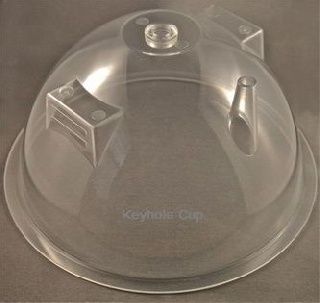Laparoscopic surgery is a minimally invasive surgical technique that has revolutionized the field of surgery. This technique involves making small incisions in the abdomen and inserting a laparoscope, which is a long, thin tube with a camera and light source, and other instruments to perform the surgery. Laparoscopic surgery offers many benefits over traditional open surgery, including reduced pain, shorter hospital stays, and quicker recovery times. However, one of the potential risks of laparoscopic surgery is access injury, which can occur when the instruments used to access the surgical site cause damage to the surrounding tissue. This essay will explore the use of the Keyhole Cup to decrease access injury in laparoscopic surgery.
Access Injury in Laparoscopic Surgery:
Access injury is a potential complication of laparoscopic surgery that occurs when the instruments used to access the surgical site cause damage to the surrounding tissue. Access injury can occur during insertion or removal of the trocar, which is the instrument used to create the initial incision in the abdomen, or during manipulation of the instruments within the abdomen.
Access injury can result in a variety of complications, including bleeding, nerve damage, and damage to nearby organs. In severe cases, access injury can even result in death. Access injury is a significant concern in laparoscopic surgery, and efforts have been made to develop new techniques and instruments to minimize this risk.
The Keyhole Cup:
The Keyhole Cup is a device that was developed to help reduce the risk of access injury in laparoscopic surgery. The Keyhole Cup is a small plastic cup that is placed over the trocar site during laparoscopic surgery. The cup acts as a shield to protect the surrounding tissue from the sharp edges of the trocar and other instruments used to access the surgical site.
The Keyhole Cup is designed to be used with a variety of laparoscopic instruments and is compatible with a wide range of surgical procedures. The device is easy to use and can be inserted and removed quickly, minimizing the risk of additional tissue damage.
The Keyhole Cup has been shown to be effective in reducing the risk of access injury in laparoscopic surgery. A study conducted in 2016 found that the use of the Keyhole Cup significantly reduced the incidence of access injury during laparoscopic surgery, with no adverse effects reported.
Advantages of the Keyhole Cup:
The Keyhole Cup offers several advantages over traditional techniques for reducing access injury in laparoscopic surgery. One of the key advantages is that the device is easy to use and can be inserted and removed quickly. This minimizes the risk of additional tissue damage and reduces the overall surgical time.
The Keyhole Cup is also compatible with a wide range of laparoscopic instruments and surgical procedures, making it a versatile tool for surgeons. The device is designed to be used with a variety of trocars and can be adapted to fit the needs of individual patients.
Another advantage of the Keyhole Cup is that it reduces the risk of complications associated with access injury, such as bleeding and nerve damage. This can result in a quicker recovery time for patients and can reduce the overall cost of the surgery.
In addition to reducing the risk of access injury, the Keyhole Cup can also improve patient outcomes by reducing postoperative pain and speeding up the recovery process. With traditional laparoscopic surgery, patients may experience pain and discomfort at the trocar site, which can prolong the recovery process. By using the Keyhole Cup, the trocar site is protected from damage, which can reduce postoperative pain and allow patients to recover more quickly.
The Keyhole Cup is also an affordable and accessible option for surgeons. Unlike other methods of reducing access injury, such as the use of expensive disposable trocars or reusable shields, the Keyhole Cup is a cost-effective and reusable device. This makes it an attractive option for surgeons and hospitals looking to reduce costs without sacrificing patient safety.
While the Keyhole Cup is a promising new technology for reducing access injury in laparoscopic surgery, it is important to note that it is not a substitute for proper surgical technique and training. Surgeons must still exercise caution and skill when using laparoscopic instruments and must be trained in the proper use of the Keyhole Cup.
In conclusion, access injury is a potential complication of laparoscopic surgery that can result in serious complications for patients. The Keyhole Cup is a device that has been developed to help reduce the risk of access injury in laparoscopic surgery. The Keyhole Cup offers several advantages over traditional techniques for reducing access injury, including ease of use, compatibility with a wide range of instruments and surgical procedures, and cost-effectiveness. By using the Keyhole Cup, surgeons can help to improve patient outcomes and reduce the risk of complications associated with access injury.
